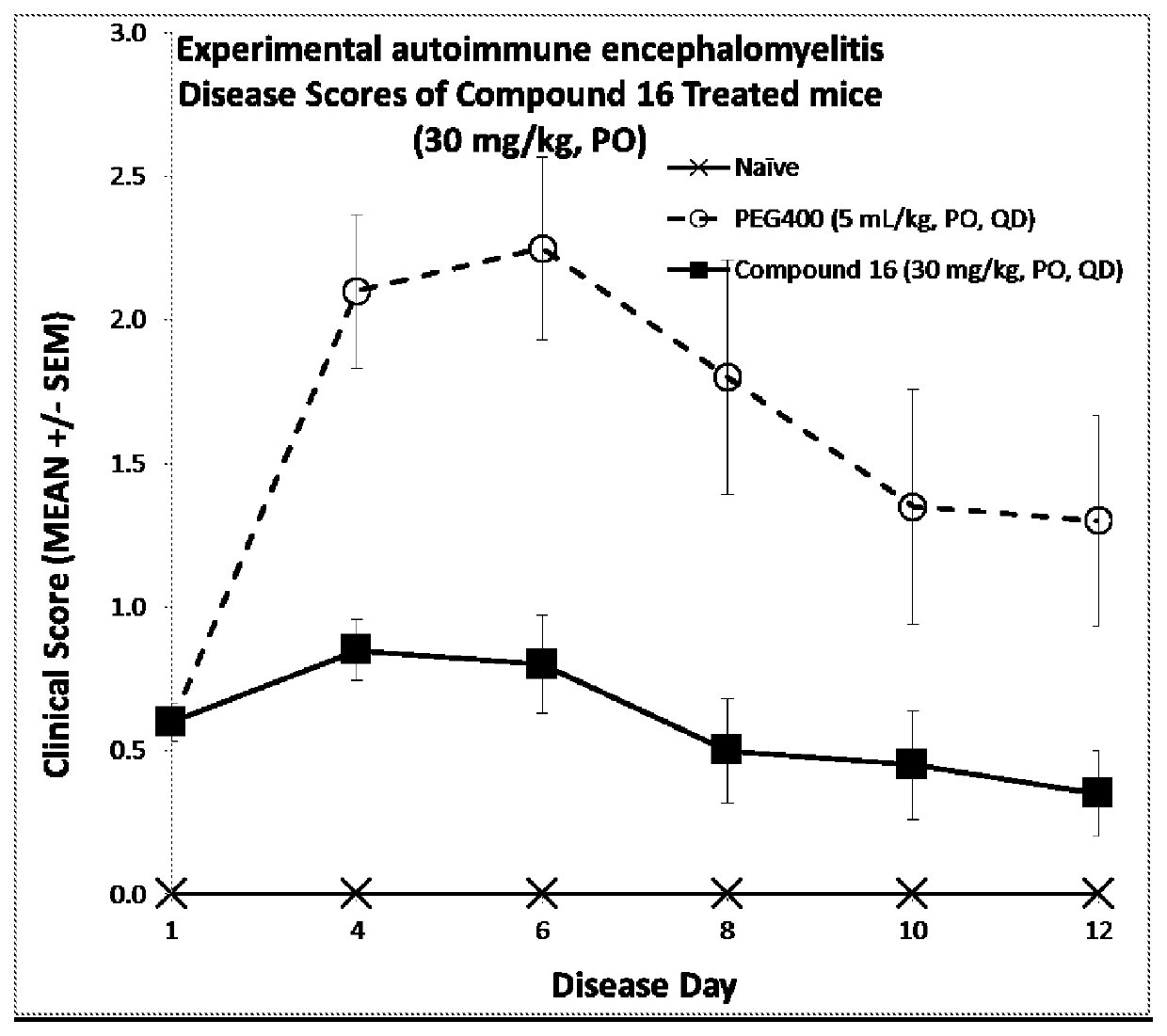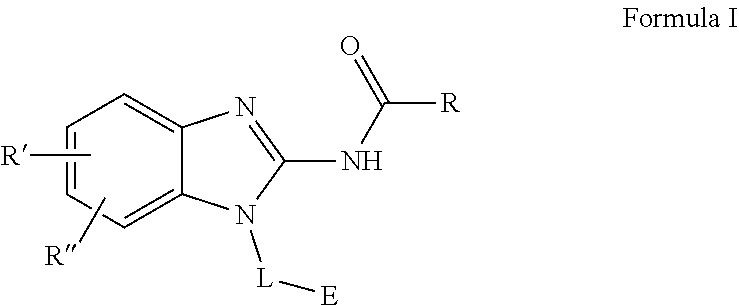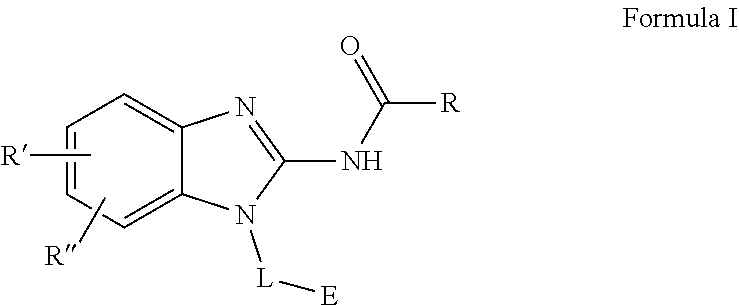Spirocyclic containing compounds and pharmaceutical uses thereof
a technology of spirocyclic and compound, which is applied in the field of new family of protein kinase inhibitors, can solve problems such as the decrease of virus production, and achieve the effect of enzymatic activity
- Summary
- Abstract
- Description
- Claims
- Application Information
AI Technical Summary
Benefits of technology
Problems solved by technology
Method used
Image
Examples
example 1
Mediated PBMC Proliferation Assay
[0636]Inhibition of cellular kinases was assessed by measuring proliferation of PBMC following stimulation with anti-CD3 and anti-CD28 antibodies which is an ITK dependent activity in T cells A (Michel F. et al Immunity; 2001, 15:935-945).
[0637]Individual wells of 96 well tissue culture plates were coated with 50 μL of 5 μg / mL anti-CD3 (OKT3, eBiosciences) overnight at 4° C. Human blood was collected in EDTA containing vacutainer tubes. PBMC were isolated on Histopaque 1077 (Sigma) following centrifugation at 400×g. Cells were washed 3 times by resuspension in PBS and centrifugation at 250×g and resuspended in media (RPMI, glutamine, 10% heat inactivated FCS) at a final concentration of 2×10e6 cells / mL. Cells (2×10e5) were added to the washed anti-CD3 coated plates and soluble anti-CD28 (CD28.2 eBiosciences) was added to each well at a final concentration of 2 μg / mL. Finally, compounds were added at various concentrations to each well. The cells were...
example 2
hibition Assay
[0639]The in vitro kinase assays were performed at Nanosyn (Santa Clara, Calif.) utilizing microfluidic detection technology. The test compounds were serially pre-diluted in DMSO and added, by the acoustic dispensing (Labcyte® 550), directly to 384 well assay plates into 10 uL of a buffer with enzyme (ITK, TXK, BTK or TEC) comprising: 100 mM HEPES, pH7.5, 5 mM MgCl2, 0.1% bovine serum albumin, 1 mM DTT, 0.01% Triton X-100 and the enzyme. Final DMSO concentration was maintained at 1% in all samples, including the controls. The reactions were initiated by addition of ATP (1 mM final concentration) and the fluorescently labeled peptide substrate to a final concentration of 1 uM, and incubated for 3 hours at 25° C. Following incubation, the reactions were quenched by addition of 40 μL of termination buffer (100 mM HEPES, pH7.5, 0.01% Triton X-100, 50 mM EDTA). Terminated plates were analyzed using Caliper LabChip® 3000 microfluidic electrophoresis instrument (Caliper Life ...
example 3
in the Experimental Autoimmune Encephalomyelitis Model of Multiple Sclerosis
[0641]TEC kinases play important roles in immune cells and pathogenic microglia in multiple sclerosis. The efficacy of compound 16 was evaluated in experimental autoimmune encephalomyelitis (EAE), a mouse model of multiple sclerosis. EAE was induced in mice according to a protocol and reagents supplied by Hooke Laboratories (Lawrence, Mass., USA: Kit EK-2110). Briefly, female C57BL / 6 mice were immunized with an emulsion of MOG35-55 peptide in complete Freund's adjuvant (CFA), followed by administration of pertussis toxin (PTX) in PBS, first on the day of immunization and then again the following day. Mice were observed for signs of paralysis and were enrolled in the study as symptoms occurred. Two groups of ten mice were recruited and treated after onset of symptoms with Compound 16 formulated in polyethylene glycol 400 (PEG) or with PEG alone. A group of ten naïve C57BL / 6 mice was maintained as a negative c...
PUM
| Property | Measurement | Unit |
|---|---|---|
| temperature | aaaaa | aaaaa |
| temperature | aaaaa | aaaaa |
| temperature | aaaaa | aaaaa |
Abstract
Description
Claims
Application Information
 Login to View More
Login to View More - R&D
- Intellectual Property
- Life Sciences
- Materials
- Tech Scout
- Unparalleled Data Quality
- Higher Quality Content
- 60% Fewer Hallucinations
Browse by: Latest US Patents, China's latest patents, Technical Efficacy Thesaurus, Application Domain, Technology Topic, Popular Technical Reports.
© 2025 PatSnap. All rights reserved.Legal|Privacy policy|Modern Slavery Act Transparency Statement|Sitemap|About US| Contact US: help@patsnap.com



